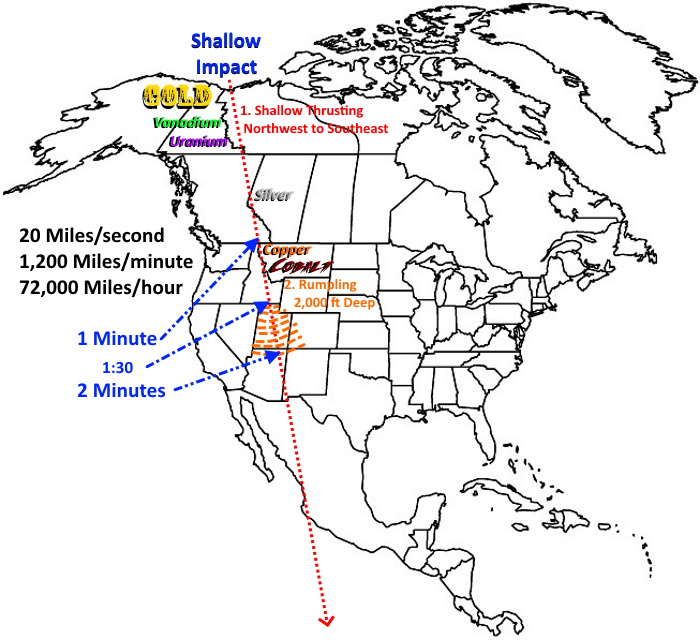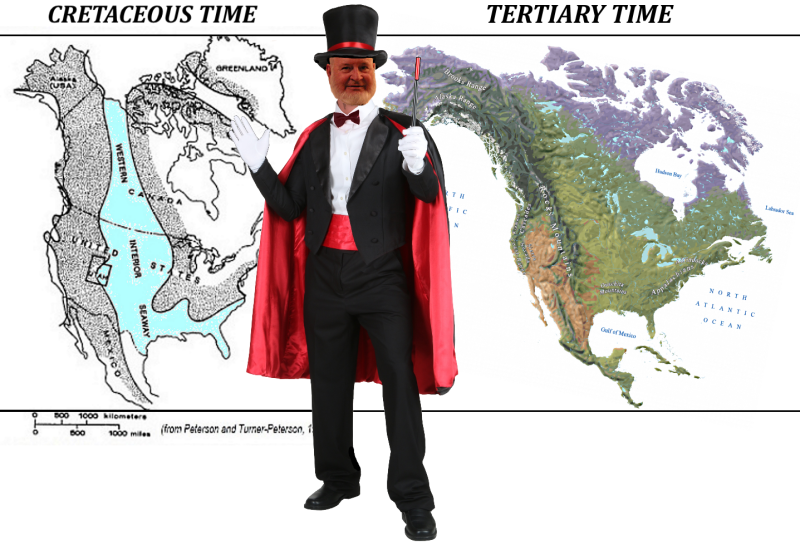Creation and Destruction of the Super Continents
Oct 19, 2024 11:06:15 GMT -5
opalpyrexia and chris1956 like this
Post by 1dave on Oct 19, 2024 11:06:15 GMT -5
First of the elements were created in stars. The heavier elements were formed in Super Novas.
When stars the size of our sun die, they begin to cool and collapse. as the vast material compacts, generating heat, it explodes, cools collapses, explodes again 3 or more times, becoming a Planetary nebula.

The gravity of the larger chunks attracts the near by material as each new wave passes, giving an amazing assortment of elements. This produced the lighter elements up through #40- Zircon.


Those Cometary knots are huge! Each one is about twice the size of our whole solar system. In time they compact to the size of Pluto and it's moons, but with lots of water/ice collected from space as it traveled for millions, perhaps billions of years, to become the comets we know.
supernova explosion expels much or all of the stellar material with velocities as much as 10% the speed of light (or approximately 30,000 km/s) and a strong shock wave forms ahead of the ejecta. That heats the upstream plasma up to temperatures well above millions of K. The shock continuously slows down over time as it sweeps up the ambient medium, but it can expand over hundreds or thousands of years and over tens of parsecs before its speed falls below the local sound speed.
A Super Nova Remanent passes through the following stages as it expands:
In time it becomes part of a molecular cloud.Turbulence in the cloud causes spin-Rotation.
Then, Gravity begins gathering the elements into meteors, Asteroids, planets, and new stars.
Orbital speed required depends on the distance from the star.





But Geologists, influenced by the religion of Uniformitarianism - "What is happening today happened in the past." As there are no big asteroids or comets striking earth today, They decided none hit ancient earth after it's formation. They had to come up with another mechanism to explain the obvious moving of the continents. they came up with the theory of Plumes rising from earth's core. They were wrong, the Asteroids and comets continued to strike from time to time!
The Very first Super Continent, Columbia, or Nuna, was broken up by a comet

That caused the spin of the earth to change. The surface and core must rotate in the same direction and at the same speed, or the internal friction will cause all kinds of chaos!
Then Rodenia was hit by another comet.

As was Pangaea, ending Permian time.

All this was recorded by the washed away members of the Grand Canyon.

And the "Death Plates" left by their impacts.

The end of Jurassic time didn't leave as much destruction as the others. Why? because it was a glancing blow, not a direct impact! But it did carve a trench from the Beaufort sea to Mexico, cover the land with valuable elements, created the Western Seaway, separated the Continent into east and west, generated the Sevier Orogeny, lowered sections of earth, preparing the way for the Laramide Orogeny to thrust younger terrain under older terrain, and the underwater creation of the Rocky Mountains.


Then the Asteroid hit the Yucatan Peninsula, ending Permian time, the shock waves allowing thee Rocky Mountains to break loose and rise, replacing the Western Seaway!

When stars the size of our sun die, they begin to cool and collapse. as the vast material compacts, generating heat, it explodes, cools collapses, explodes again 3 or more times, becoming a Planetary nebula.

The gravity of the larger chunks attracts the near by material as each new wave passes, giving an amazing assortment of elements. This produced the lighter elements up through #40- Zircon.


Those Cometary knots are huge! Each one is about twice the size of our whole solar system. In time they compact to the size of Pluto and it's moons, but with lots of water/ice collected from space as it traveled for millions, perhaps billions of years, to become the comets we know.
supernova explosion expels much or all of the stellar material with velocities as much as 10% the speed of light (or approximately 30,000 km/s) and a strong shock wave forms ahead of the ejecta. That heats the upstream plasma up to temperatures well above millions of K. The shock continuously slows down over time as it sweeps up the ambient medium, but it can expand over hundreds or thousands of years and over tens of parsecs before its speed falls below the local sound speed.
A Super Nova Remanent passes through the following stages as it expands:
1. Free expansion of the ejecta, until they sweep up their own weight in circumstellar or interstellar medium. This can last tens to a few hundred years depending on the density of the surrounding gas.
2. Sweeping up of a shell of shocked circumstellar and interstellar gas. This begins the Sedov-Taylor phase, which can be well modeled by a self-similar analytic solution (see blast wave). Strong X-ray emission traces the strong shock waves and hot shocked gas.
3. Cooling of the shell, to form a thin (< 1 pc), dense (1 to 100 million atoms per cubic meter) shell surrounding the hot (few million kelvin) interior. This is the pressure-driven snowplow phase. The shell can be clearly seen in optical emission from recombining ionized hydrogen and ionized oxygen atoms.
4. Cooling of the interior. The dense shell continues to expand from its own momentum. This stage is best seen in the radio emission from neutral hydrogen atoms.
5. Merging with the surrounding interstellar medium. When the supernova remnant slows to the speed of the random velocities in the surrounding medium, after roughly 30,000 years, it will merge into the general turbulent flow, contributing its remaining kinetic energy to the turbulence.
2. Sweeping up of a shell of shocked circumstellar and interstellar gas. This begins the Sedov-Taylor phase, which can be well modeled by a self-similar analytic solution (see blast wave). Strong X-ray emission traces the strong shock waves and hot shocked gas.
3. Cooling of the shell, to form a thin (< 1 pc), dense (1 to 100 million atoms per cubic meter) shell surrounding the hot (few million kelvin) interior. This is the pressure-driven snowplow phase. The shell can be clearly seen in optical emission from recombining ionized hydrogen and ionized oxygen atoms.
4. Cooling of the interior. The dense shell continues to expand from its own momentum. This stage is best seen in the radio emission from neutral hydrogen atoms.
5. Merging with the surrounding interstellar medium. When the supernova remnant slows to the speed of the random velocities in the surrounding medium, after roughly 30,000 years, it will merge into the general turbulent flow, contributing its remaining kinetic energy to the turbulence.
In time it becomes part of a molecular cloud.Turbulence in the cloud causes spin-Rotation.
Then, Gravity begins gathering the elements into meteors, Asteroids, planets, and new stars.
Orbital speed required depends on the distance from the star.



Earth was built by billions of meteors, asteroids, and comets crashing together.

Although it has slowed down, the number of impacts from comets has never stopped.

But Geologists, influenced by the religion of Uniformitarianism - "What is happening today happened in the past." As there are no big asteroids or comets striking earth today, They decided none hit ancient earth after it's formation. They had to come up with another mechanism to explain the obvious moving of the continents. they came up with the theory of Plumes rising from earth's core. They were wrong, the Asteroids and comets continued to strike from time to time!
The Very first Super Continent, Columbia, or Nuna, was broken up by a comet

That caused the spin of the earth to change. The surface and core must rotate in the same direction and at the same speed, or the internal friction will cause all kinds of chaos!
Then Rodenia was hit by another comet.

As was Pangaea, ending Permian time.

All this was recorded by the washed away members of the Grand Canyon.

And the "Death Plates" left by their impacts.

The end of Jurassic time didn't leave as much destruction as the others. Why? because it was a glancing blow, not a direct impact! But it did carve a trench from the Beaufort sea to Mexico, cover the land with valuable elements, created the Western Seaway, separated the Continent into east and west, generated the Sevier Orogeny, lowered sections of earth, preparing the way for the Laramide Orogeny to thrust younger terrain under older terrain, and the underwater creation of the Rocky Mountains.


Then the Asteroid hit the Yucatan Peninsula, ending Permian time, the shock waves allowing thee Rocky Mountains to break loose and rise, replacing the Western Seaway!













